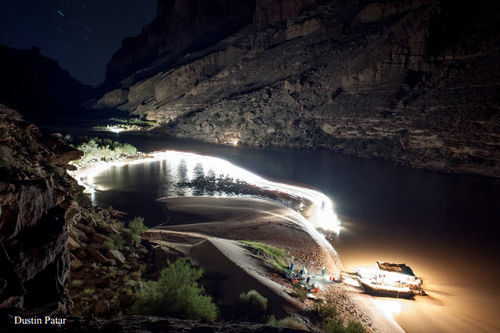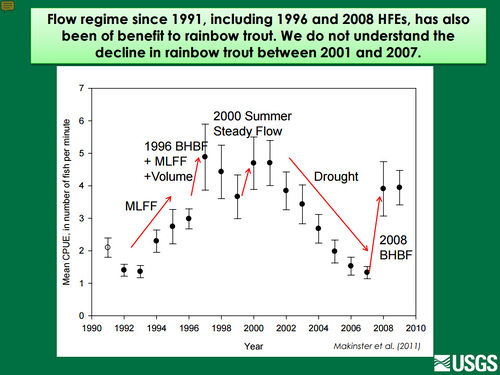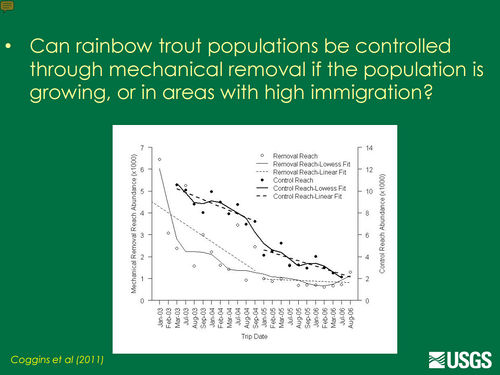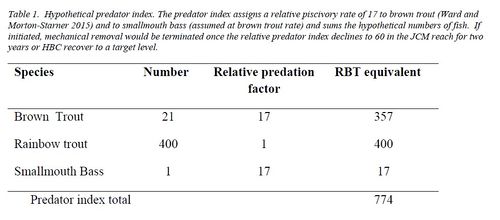Difference between revisions of "Trout Reduction Efforts"
Cellsworth (Talk | contribs) |
Cellsworth (Talk | contribs) |
||
| Line 120: | Line 120: | ||
*[https://www.usbr.gov/uc/rm/amp/amwg/mtgs/12feb22/Attach_11c.pdf Non-Native Fish Control EA PPT] | *[https://www.usbr.gov/uc/rm/amp/amwg/mtgs/12feb22/Attach_11c.pdf Non-Native Fish Control EA PPT] | ||
*[https://www.usbr.gov/uc/rm/amp/twg/mtgs/12feb02/Attach_02.pdf Final Biological Opinion on the Operation of Glen Canyon Dam Including High Flow Experiments and Non-Native Fish Control Memo] | *[https://www.usbr.gov/uc/rm/amp/twg/mtgs/12feb02/Attach_02.pdf Final Biological Opinion on the Operation of Glen Canyon Dam Including High Flow Experiments and Non-Native Fish Control Memo] | ||
| + | *[https://www.usbr.gov/uc/rm/amp/twg/mtgs/12feb02/Attach_05c.pdf Executive Summaries from the High-Flow Experiment EA and the Non-Native Fish Control EA] | ||
'''2011''' | '''2011''' | ||
Revision as of 16:24, 5 June 2017
|
|
Findings from the Natal Origins Project (NO) Project
|
| -- |
-- |
-- |
|---|
Coggins et al. 2011.Our results suggest that removal efforts were successful in rapidly shifting the fish community from one dominated numerically by nonnative species to one dominated by native species. Additionally, increases in juvenile native fish abundance within the removal reach suggest that removal efforts may have promoted greater survival and recruitment. However, drought-induced increases in river water temperature and a systemwide decrease in rainbow trout abundance concurrent with our experiment made it difficult to determine the cause of the apparent increase in juvenile native fish survival and recruitment. |
|



